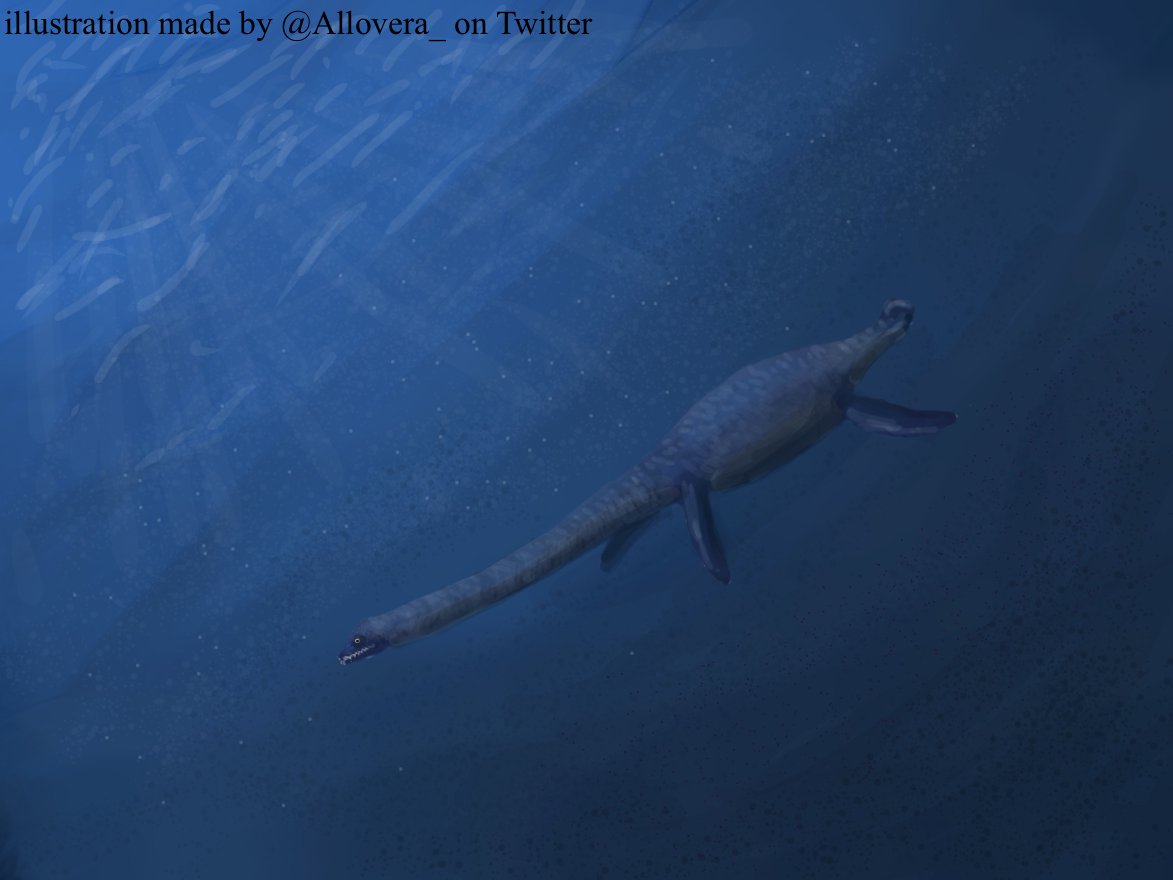Welcome to Abyssosaurus

Name Definition
Abyss/deep pit lizard
Name Given By
Alexander Yu Berezin in 2011
Location
Chuvashia/Chuvash Republic, western Russia
Classification
Reptilia, Sauropterygia, Plesiosauria, Cryptoclididae
Size
Unavailable
Temporal Range
Hauterivian age of the Early Cretaceous, ~133 - 130 million years ago
Ecological niche
Mid - sized aquatic predator
Species/Sub Species
A. nataliae
Diet
Like other cryptoclidids, Abyssosaurus probably hunted small fish as a soft bodied delicacy as well as crustaceans and cephalopods such as squid
Introduction
Abyssosaurus is a genus of cryptoclidid plesiosaur reptiles that lived in Russia during the Early Cretaceous. Abyssosaurus translates to “abyss lizard”, denoting the fact that it was a plesiosaur living in the bathyal zone, one of the lowest zones in the open ocean, with only the hadal and abyssal zone beneath it.
Abyssosaurus is known from one specimen (holotype) housed in the Museum of Chuvash Natural History Society which is a fragmentary postcranial skeleton. The holotype was discovered in the Poretskii District of the Chuvash Republic and dates back to the Hauterivian stage of the Early Cretaceous, approximately 133 - 130 million years ago. Initially, Abyssosaurus was thought to have occupied an intermediate position between the Late Jurassic cryptoclidid pair Tatanectes laramiensis and Kimmerosaurus langhami and the Late Cretaceous elasmosaurid pair Aristonectes and Kaiwhekea katiki. When Berezin described Abyssosaurus in 2011, he considered the specimen of Abyssosaurus as the first reliable aristonectid in the fossil record from Russia. However, a later phylogenetic analysis in 2013 by Roger Benson and Patrick Druckenmiller recovered Abyssosaurus as a derived cryptoclidid plesiosaur and was most closely related to Colymbosaurus of all cryptoclidids.
Berezin revisited the specimen of Abyssosaurus in 2019 and described the anatomy of Abyssosaurus in careful detail. The maxilla seems to exhibit some features that are similar to those of juvenile and subadult elasmosaurids. Berizin says that the maxillary restructuring is associated with the overall structure of the skull. The eye sockets of Abyssosaurus are also much larger and more rounded, more than the average cryptoclidid, possibly meaning that Abyssosaurus was adapted to seeing in deeper and darker parts of the ocean consistent with its eyesight such as in the bathyal/bathypelagic zone (which has been primarily suggested for Abyssosaurus), also known as the midnight zone, which reaches up to 1,000 - 4,000 meters (3,300 - 13,300 ft) deep from the ocean surface, making it perfect for Abyssosaurus to hunt in. The skull is overall extremely short and triangular. The gastralia (a series of belly ribs found in some prehistoric reptiles) exhibit pachyostosis, a non-pathological condition in which the bones of an animal are thickened, which is usually induced by an extra layer of lamellar bone (the main type of bone found in adult skeletons), and often occurs during osteosclerosis (when bones become more dense). This would have made the animal resistant to buoyancy, but since plesiosaurs breathe air and have lungs, their air-filled lungs would have balanced it out to a neutral level buoyancy in water given the thickening of its gastralia. However, F. Robin O’Keefe et al. did note that the pachyostosis present in the gastralia would have helped with the resistance of turbulence underwater, allowing Abyssosaurus to swim in a stable manner. The front and rear flippers seem to have also exhibited pachyostosis, and the rear flippers seem to have been longer than the front flippers. This is a body trait also seen in other colymbosaurines. This adaptation would have made Abyssosaurus and colymbosaurines exceptional divers, as they would be able to hover in a diagonal position while watching their surroundings for prey.
Berezin noted that due to the adaptation of the cold and harsh deep sea conditions of the habitat Abyssosaurus lived in, Abyssosaurus was affected by the loss of ontogenetic stages in its lifespan. Some organisms not only retain the features of their species’ young into adulthood, but also act similar to the species’ younger individuals, which is usually a slow and inactive lifestyle. This condition is called neoteny, which is when the physical growth of an animal is slowed down, usually because there is less competition and more resources. In humans, neoteny occurs because sexual selection is more relaxed so we don't have to worry about reaching sexual maturity as fast. This kind of behavior is seen in whales, where some whales will take a long time to rest or sleep on the surface of the water, though they can’t do this for long, as they will lose body temperature by being inactive. Going back to the large eye sockets, Abyssosaurus would have most likely hunted and lived in the bathyal zone, the place where most deep sea predators like anglerfish live, though they would have occasionally went up to the surface for air, and return back to the bathyal zone. Of course, the preferred diet for most cryptoclidids, cephalopods and crustaceans, were also present here, making it the perfect environment for an animal like Abyssosaurus.
Sources:
- https://en.wikipedia.org/wiki/Abyssosaurus
